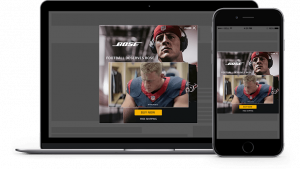Understanding Interstitial Ads: A Comprehensive Guide
Understanding Interstitial Ads: A Comprehensive Guide
Blog Article
In the ever-evolving landscape of digital advertising, capturing user attention is essential for marketers. Interstitial ads are located as a prominent ad format that aims to accomplish just that. These ads are built to provide a seamless transition between content, offering advertisers a unique way to engage users. In this article, we'll explore what are interstitial ads, that they work, their benefits, and greatest practices for implementation.
What Are Interstitial Ads?
Interstitial ads are full-screen advertisements that appear at natural transition points in the user’s journey, typically between content pages or during app navigation. Unlike standard banners, which occupy a lesser portion of the screen, interstitial ads take control the entire display, driving them to highly visible and sometimes engaging.
These ads can be displayed in various forms, including:
Static images
Animated graphics
Video content
Interactive elements
Interstitial ads are commonly used in mobile apps, mobile websites, and also desktop environments, especially during loading screens or when navigating between parts of content.
How Do Interstitial Ads Work?
The functionality of interstitial ads is fairly straightforward:
Trigger Point: Interstitial ads are developed to appear at specific moments, such as when a user transitions derived from one of page to an alternative, completes a level in the game, or pauses during video playback. This timing is vital to ensure that users are not interrupted in the center of an action.
Display: Once the trigger point is reached, the interstitial ad gets control the screen. Users must typically engage the ad (by clicking, tapping, or closing it) to go on to their desired content.
Engagement: Because interstitial ads occupy the total screen, they could capture the user’s attention effectively. Advertisers can lead you to clear calls to action (CTAs) to encourage user interaction.
Timing and Frequency: Advertisers can control how frequently these ads appear and at what intervals, making sure users usually do not become overwhelmed or aggravated by excessive interruptions.
Benefits of Interstitial Ads
Interstitial ads offer many perks that make them a well known choice for advertisers:
High Visibility
Since interstitial ads cover the whole screen, they're hard to ignore. This high visibility can result in better engagement rates when compared with smaller ad formats.
Enhanced User Engagement
The immersive nature of interstitial ads allows advertisers to share their message more effectively. Rich media formats, such as videos and animations, can create a more engaging experience.
Effective for Branding
Interstitial ads provide ample space for branding elements, making it easier for advertisers to talk their message and build brand awareness.
Improved Click-Through Rates (CTR)
Due on their visibility and engaging formats, interstitial ads often see higher CTRs in comparison with traditional banner ad campaigns. Users are more inclined to interact with a full-screen ad that captures their attention.
Flexibility in Design
Advertisers have the freedom to generate visually appealing and interactive ads that may include videos, animations, as well as quizzes, enhancing the overall user experience.
Drawbacks of Interstitial Ads
While interstitial ads have many benefits, additionally, they come with some potential downsides:
User Frustration
If not implemented thoughtfully, interstitial ads can frustrate users, in particular when they appear too much or at inconvenient times. This can cause negative experiences and increased bounce rates.
Ad Blocker Resistance
Some users may employ ad blockers that concentrate on interstitial ads, limiting their effectiveness.
Loading Times
If interstitial ads aren't optimized, they can slow down loading times, that might irritate users and cause abandoned sessions.
Compatibility Issues
Interstitial ads has to be designed to work nicely across various devices and screen sizes. Poorly designed ads may result inside a subpar user experience.
Best Practices for Implementing Interstitial Ads
To maximize the effectiveness of interstitial ads, advertisers should look into the following tips:
Timing Is Key
Ensure that interstitial ads are displayed at natural transition points, including after submissions are fully loaded or during app navigation. Avoid showing ads at disruptive moments.
Limit Frequency
Control how often users see interstitial ads in order to avoid frustration. Implement frequency caps to be sure users usually are not overwhelmed by repeated ads.
Design for Engagement
Create visually appealing ads with clear CTAs. Use rich media elements like videos or interactive components to boost engagement.
Test for User Experience
Conduct A/B testing to determine the optimal timing, frequency, and form of interstitial ads. Monitor user engagement metrics to spot what resonates best together with your audience.
Optimize for Mobile
Since interstitial ads are commonly used in mobile environments, ensure your ads are optimized for assorted screen sizes and orientations.
Provide a Clear Exit Option
Always incorporate a visible and easy way for users to close the ad and return with their content. This helps conserve a positive user experience and reduces frustration.
Conclusion
Interstitial ads can be a powerful tool for advertisers looking to improve user engagement and drive conversions. With their high visibility and immersive formats, they are able to capture attention effectively when implemented thoughtfully. By understanding the benefits and drawbacks, and also adhering to recommendations, marketers can leverage interstitial ads to produce impactful advertising experiences that resonate with their audience.
As the digital advertising landscape will continue to evolve, interstitial ads will probably remain a prominent format for brands seeking to make a lasting impression on users.